Fort Meigs Historic Site
Introduction
Text-to-speech Audio
Images
A wampum belt from the Treaty of Greenville, on display at the museum. This belt was used as a symbol of peace, as Tecumseh gave it to William Henry Harrison.

This is a drawn up map of the Siege of Fort Meigs. It shows the fort itself, and the route tactics used in the battle.
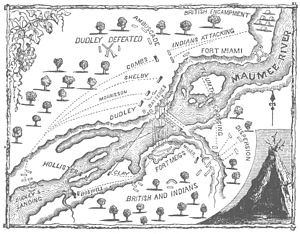
On display in the conflict area of the museum, visitors can see the two horse skeletons found on Fort Megs's ground.
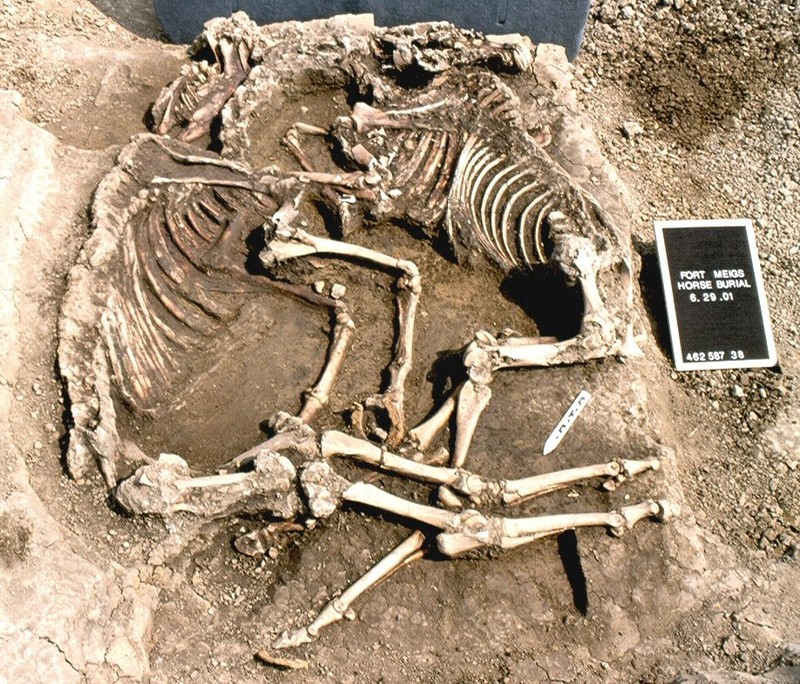
The Native American exhibit located at the Fort Meigs museum includes displays related to American, British, and Native leaders including Tecumseh
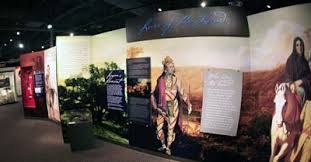
State of Ohio historical marker indicating the birthplace of Tecumseh, the Shawnee leader. There are no actual images of Tecumseh known to exist.
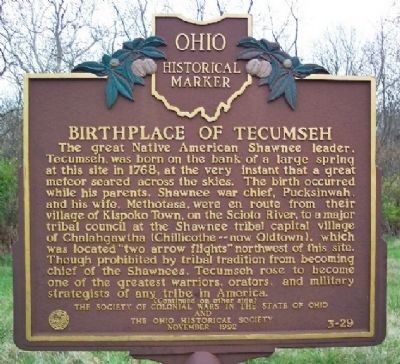
The centerpiece of this National Historic Landmark is the reconstructed fort and nearby visitor's center.
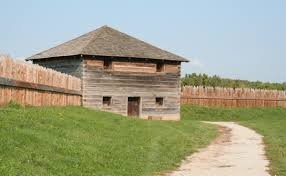
Backstory and Context
Text-to-speech Audio
Visitors can tour the reconstructed wooden fort and see replicas of cannon as well as authentic weapons and other artifacts in the visitor's center. The Siege of Fort Meigs, a battle during the War of 1812, was an attempt by the British to help the Native Americans take back control of their lands. The battle resulted in many casualties for the Americans and many were captured and executed in front of Tecumseh. Even with the great loss of soldiers, the British and Native Americans failed to capture the fort.
Fort Meigs was a strategic fortification along the banks of the Maumee River in present-day Perrysburg, Ohio. On June 18, 1812, the United States declared war on Great Britain, who joined forces with Tecumseh and the Native Americans. The western theater of the war played a prominent role in the early military plans of the war for the United States. However, American soldiers were highly unprepared for war and suffered many early defeats. In the first three months of the war, the United States lost Fort Mackinac in Michigan, Fort Detroit, and Fort Dearborn, and only controlled Fort Wayne.
As the war waged on, Tecumseh's men and the forces of Great Britain defeated the Americans at the Battle of the River Raisin in January of 1813. As a result, General William Henry Harrison lost one-third of his Army. However, in a turn of events, the Americans began to turn their luck around as the construction of Fort Meigs, a massive 10-acre installation that became a base for men and supplies. It was from here that the Americans launched a winter invasion into Canada in 1813. However, this plan failed, and General Harrison used Fort Meigs as a defensive checkpoint in order to prevent the Native Americans and the British into American territory as well as to by the American forces enough time to build a navy and defeat the British on Lake Erie.
Fort Meigs consisted of seven blockhouses used for defense tactics, five artillery batteries, two storehouses, and had about twenty pieces of artillery. Fort Meigs withstood two sieges by the British and their American Indian allies in 1813 when the British and Native American troops attempted to capture the fort. As stated above, they failed in both attempts. The American victories turned the war around in favor of the United States.
After the second siege, the Native American and British forces lost a naval battle on Lake Erie in September of 1813, forcing them to retreat to Upper Canada where they were defeated by the American forces at the Battle of Thames in October of 1813. Tecumseh, the Shawnee war chief, was killed in the battle.
As for Fort Meigs, the fort was reconstructed in the 1970s and in 2003. Today, it is the largest reconstructed, wooden-walled fort in the United States.
Along with visiting the reconstructed fort, the museum offers many artifacts found on site and teaches about the siege and other events and people from around that time. The fort was reconstructed in the 1970’s and the museum opened in 1974. The museum is a great way to visit the past and learn more about that time. Some of the artifacts include bomb fragments and there is even the wampum belt from the Greenville treaty as well. After visiting this great museum there is a gift shop to stop in and see as well.
The highlight of the museum is the four large exhibits called the "Legacy of Freedom." Each unique exhibit covers a specific part of the battle. For instance, the discovery exhibit called "Era," is an interactive, historical exhibit about Frontier Ohio. This section of the Fort Meigs Museum is filled with maps and descriptions of the early Native inhabitants and how they came into conflict with Europeans and Americans. Next, visitors can explore the conflict portion of the museum. This exhibit provides historical context about the Battle/Siege of Fort Meigs, as well as, what started the War of 1812. Also, it shows the role that Fort Meigs played in the war. This portion displays hundreds of artifacts, most of which were found on-site, to help tell the story of Fort Meigs. Moving on to the sections titled "understanding," this exhibit has something for everyone and provides the most "hands-on" experiences for guests. With that, the understand exhibit shows how archaeologists and historians were able to discover what took place here over 200 years ago. Guests can enjoy watching a video about the discovery of two horses found buried here. Last but not least, the remembrance section of the museum shows how the men that served here at Fort Meigs are being remembered, as well as their experiences in battle. Another aspect of this display focuses on how people in today's world are either remembering or immortalizing them.
Sources
"Fort Meigs." Ohio History Central. Accessed May 1, 2017. http://www.ohiohistorycentral.org/w/Fort_Meigs.
Pratt, Michael. "Fort Meigs." National Park Service - National Register of Historic Places Nomination Form. August 4, 1969. https://npgallery.nps.gov/GetAsset/6b917aac-0102-493e-8e44-f1ec15a560ae.
